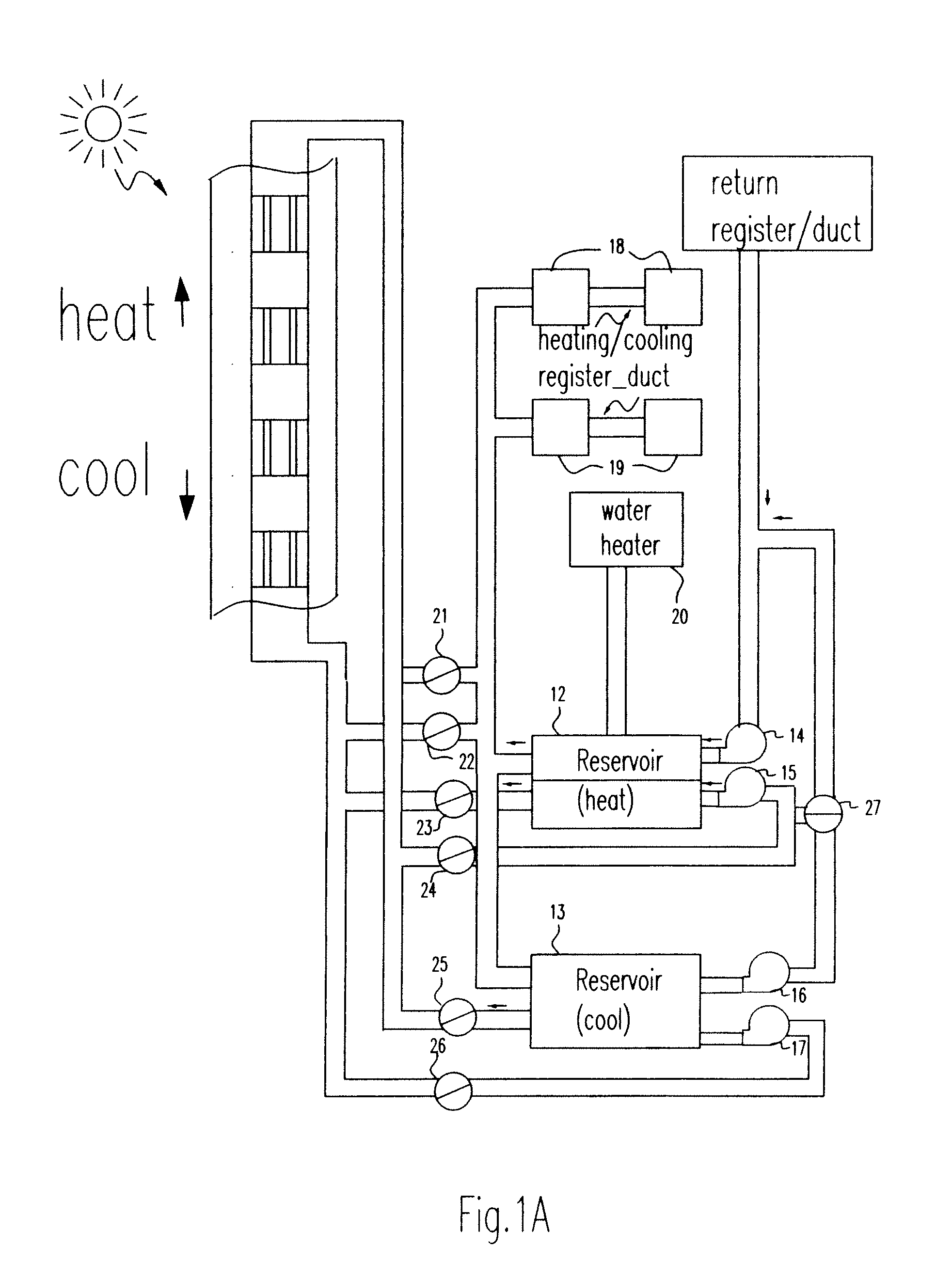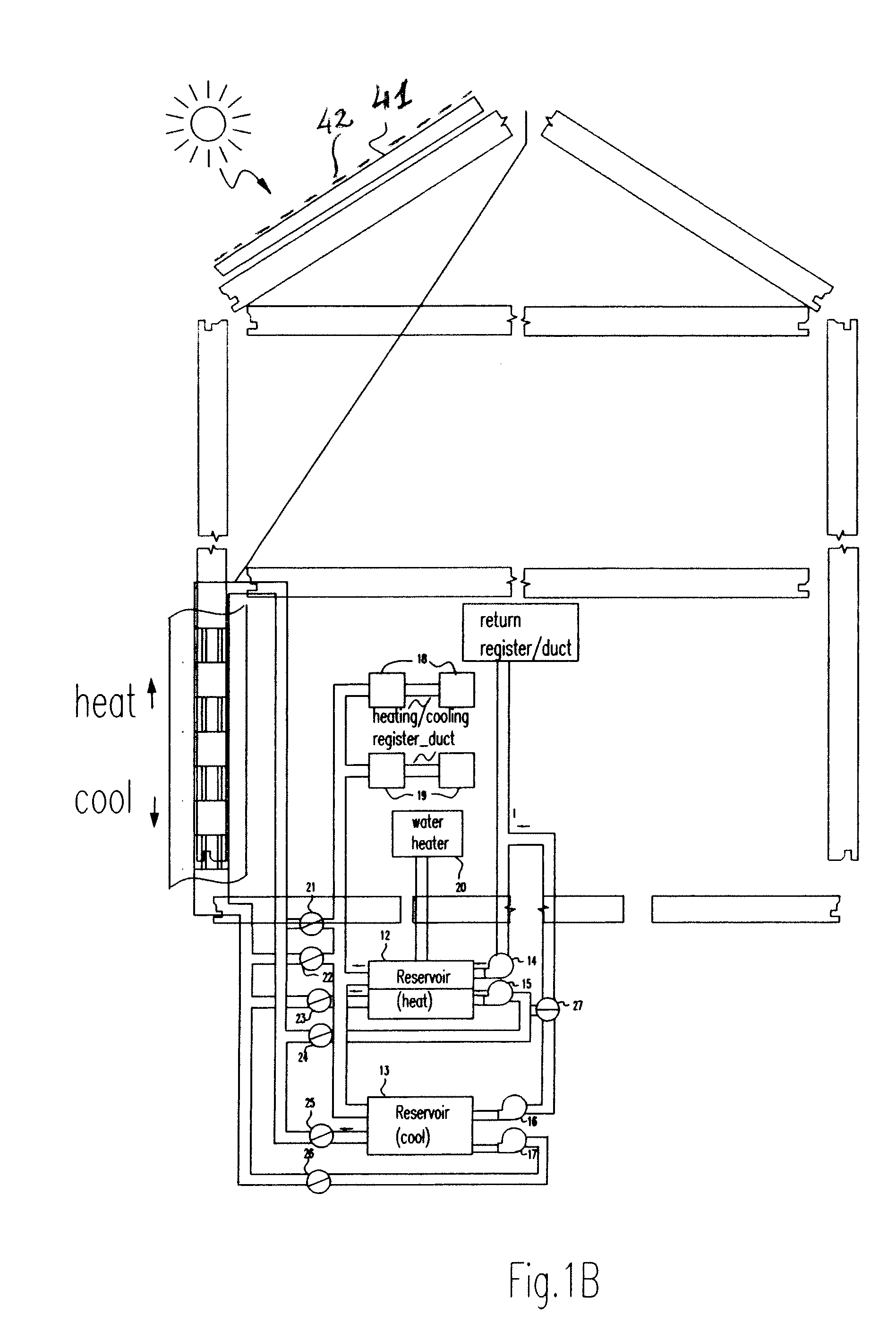Energy efficient building design
a building design and energy-efficient technology, applied in sustainable buildings, lighting and heating apparatus, heating types, etc., can solve the problems of inefficiency, high cost and largely inefficient above-mentioned sources, and the conversion to electrical energy introduces additional inefficiency, so as to simplify the process of preparing materials for mass production and simple method suitable for mass production
- Summary
- Abstract
- Description
- Claims
- Application Information
AI Technical Summary
Benefits of technology
Problems solved by technology
Method used
Image
Examples
Embodiment Construction
[0023]The principal purpose of the present invention is to capture, store and use as much solar energy as possible during the day, when the sun heats outside walls of a house and / or radiate heat therefrom at night or when solar energy collection is not needed or possible. Referring now to the drawings, and more particularly to FIG. 1A, there is schematically shown an energy efficient heat transfer system in accordance with the present invention. While FIG. 1A, for clarity, shows only a single, exemplary block in accordance with the invention, the entire exterior surface of the house or any desired portions thereof may be used as a collector or radiator of energy as shown in FIG. 1B. The walls 11 and roof 113 of the building, due to the special block structure, can transfer heat from the exterior surfaces, heated by the sun, to a heat reservoir 12. When heat is needed in the house, air can be moved either directly from the wall system or from the heat reservoir 12 using pumps 14 and ...
PUM
 Login to View More
Login to View More Abstract
Description
Claims
Application Information
 Login to View More
Login to View More - R&D
- Intellectual Property
- Life Sciences
- Materials
- Tech Scout
- Unparalleled Data Quality
- Higher Quality Content
- 60% Fewer Hallucinations
Browse by: Latest US Patents, China's latest patents, Technical Efficacy Thesaurus, Application Domain, Technology Topic, Popular Technical Reports.
© 2025 PatSnap. All rights reserved.Legal|Privacy policy|Modern Slavery Act Transparency Statement|Sitemap|About US| Contact US: help@patsnap.com



